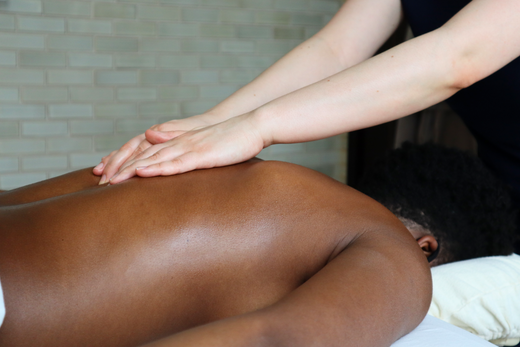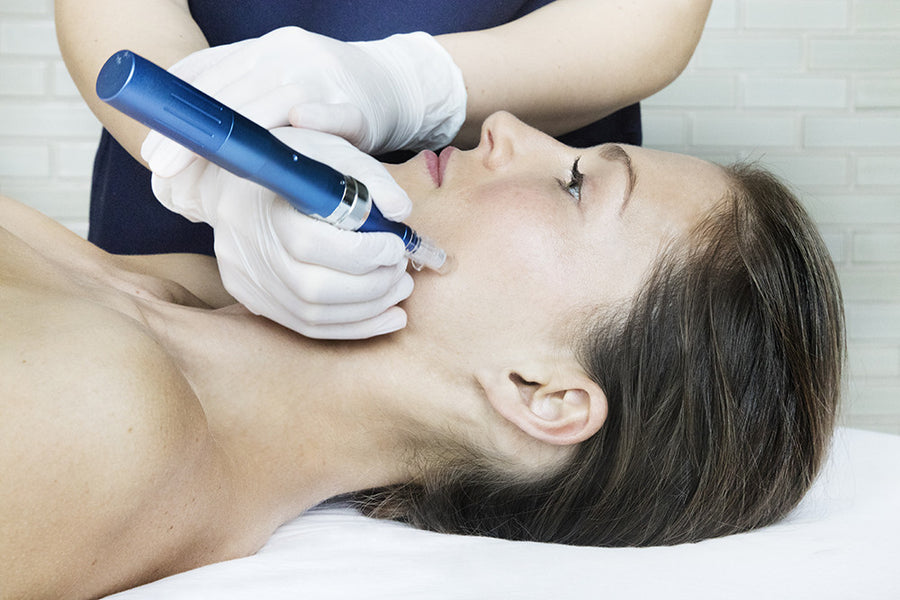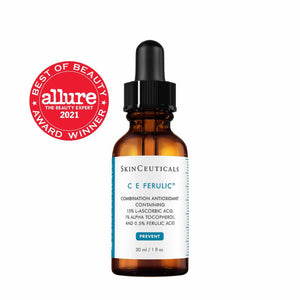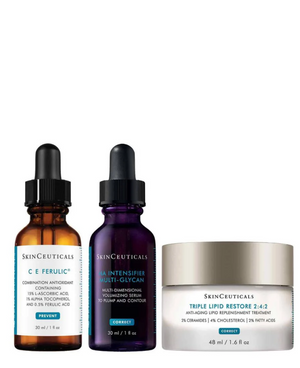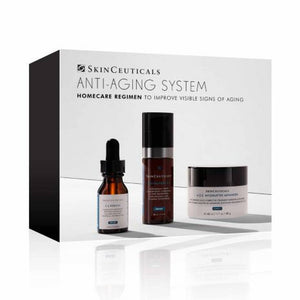
Dry brushing has become a mainstay in modern skincare routines for improving skin texture without adding time consuming steps or complicated products. It’s low tech and easy to learn but delivers noticeable results when practiced consistently. By using a firm-bristled brush to sweep across dry skin, you stimulate the surface, exfoliate dead cells, and support circulation and lymphatic flow beneath.
The result: skin that feels softer, looks more even, and absorbs body care products more effectively. And while it’s often discussed as a wellness trend, dry brushing has long been used as a straightforward way to support healthy skin.
What Is Dry Brushing?
Dry brushing is a form of manual exfoliation that involves brushing the skin with a dry, firm-bristle brush using long, upward strokes. The process physically removes dead skin cells and debris that collect at the surface. This type of exfoliation is often more controlled than scrubs and doesn’t require any additional product: just the brush and clean, dry skin.
In addition to exfoliating the skin, dry brushing stimulates the superficial lymphatic system, which helps move excess fluid and waste. When practiced consistently, it may support circulation and contribute to a smoother appearance by offering some of the same benefits of lymphatic drainage.
What Are the Benefits of Dry Brushing?
The benefits of dry brushing come from two primary effects: exfoliation and stimulation. When practiced correctly, it can:
- Improve skin texture by removing surface buildup
- Support circulation, which may give skin a temporary, healthy-looking flush
- Encourage lymphatic movement, helping reduce mild swelling or puffiness
- Prime skin to better absorb moisturizers, body oils, or treatments
- Contribute to a smoother appearance in areas with uneven tone or visible cellulite
While it’s not a clinical solution, dry brushing can make a visible difference in how your skin looks and feels when used regularly.
How to Dry Brush Correctly
Dry brushing is simple to integrate, but technique matters. For best results:
- Start with completely dry skin before your shower or bath
- Use a brush with natural bristles that feels firm but not sharp
- Begin at the feet and use long, sweeping strokes toward the heart
- Brush legs, arms, and torso in sections — always upward or inward
- Use circular motions on the abdomen, hips, and shoulders
- Never brush broken, sunburned, or inflamed skin
- After brushing, rinse off in the shower and apply a moisturizer
Most people benefit from brushing 3 to 5 times per week. More frequent brushing may be tolerated by some, but aggressive daily brushing can lead to irritation or sensitivity — especially on thinner or reactive skin types.
Choosing a Brush
The ideal dry brush has densely packed natural bristles — such as boar or plant fiber — and a handle long enough to reach your back and shoulders. Avoid synthetic brushes, which can feel overly harsh and may irritate the skin.
If you’re new to dry brushing, start with a medium-stiffness bristle and adjust based on comfort. You can also choose a brush with massage nodules for extra stimulation, but they aren’t necessary for results.
How to Clean and Maintain Your Dry Brush
Because dry brushing physically lifts debris and dead skin cells, the brush should be cleaned regularly. Once a month, gently wash the bristles with mild soap and warm water, then allow it to air dry fully in a well-ventilated space. Never store it in a humid bathroom drawer or closed container while damp. Replace the brush every 6 to 12 months, depending on frequency of use and condition.
Where Does Dry Brushing Fit in a Body Care Routine?
Think of dry brushing as a pre-treatment step. It works best right before your shower, when the skin is clean but dry. After brushing, rinse off as usual, then apply a hydrating body product while skin is still slightly damp. This layering improves moisture retention and allows active ingredients to reach deeper layers more effectively.
Dry brushing is especially useful before applying body serums, oils, or retinols. By creating a smoother surface and stimulating blood flow, it can help these products absorb more evenly and feel more effective.
What About Cellulite?
Dry brushing is often marketed as a way to reduce cellulite. While it cannot remove cellulite — which is caused by deeper structural tissue — it can create a smoother surface texture and reduce temporary swelling. In other words, it may help cellulite look less visible in the short term, but it won’t change the underlying structure of the skin.
Who Should Not Dry Brush?
Dry brushing isn’t for everyone. Avoid it if you have:
- Active eczema, psoriasis, or other inflammatory skin conditions
- Sunburn or peeling skin
- Open cuts, wounds, or active acne on the body
- Very thin or fragile skin
If you’re unsure, consult with a licensed esthetician or dermatologist. Skin should feel stimulated, not scratched or irritated.
Frequently Asked Questions
How often should I dry brush?
Three to five times a week works well for most people. Avoid brushing more often if your skin becomes sensitive or irritated.
Should I dry brush before or after showering?
Always before. Brushing lifts debris that should be rinsed away, and showering afterward helps prevent clogged pores or residue buildup.
How long should dry brushing take?
A full-body dry brush session typically takes between 3 and 7 minutes. Take your time, but don’t overdo any one area.
Can I use a body scrub instead?
Body scrubs also exfoliate, but they do not offer the same circulatory or lymphatic stimulation. Dry brushing is more targeted and can be done without additional products.
What’s the best time of day to dry brush?
Morning is ideal for most people because the increased circulation can feel energizing. But evening brushing can also be beneficial, especially before a warm bath or self-tan application.
Try Dry Brushing at Bella Santé
If you’re curious about dry brushing but not sure where to start, we offer professional dry brushing as part of our Coconut Dry Brush Massage: a treatment that combines firm bristle stimulation with hydrating coconut oil to leave your skin soft, smooth, and well-conditioned.
It’s an effective way to experience dry brushing in the hands of a professional and to understand how the right pressure, tools, and technique can noticeably improve how your skin looks and feels.
